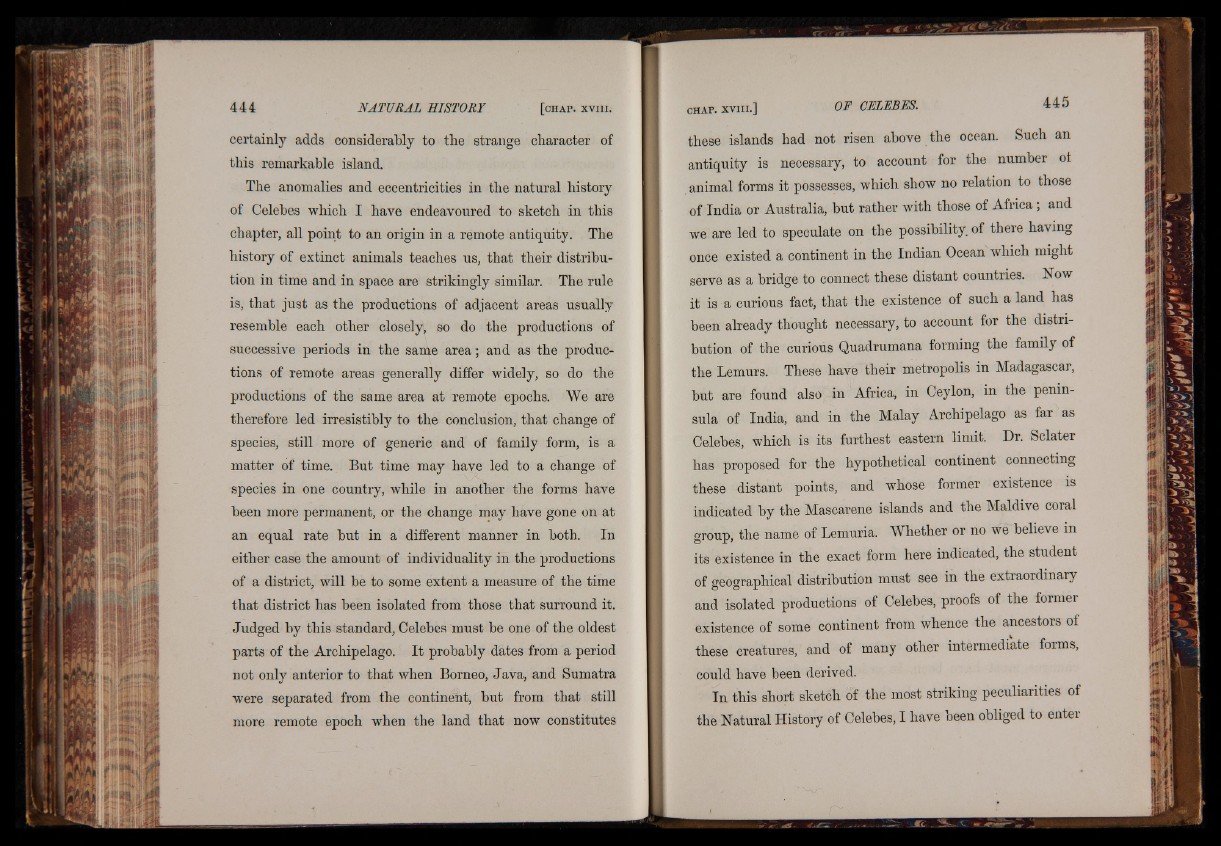
certainly adds considerably to the strange character of
this remarkable island.
The anomalies and eccentricities in the natural history
of Celebes which I have endeavoured to sketch in this
chapter, all point to an origin in a remote antiquity. The
history of extinct animals teaches us, that their distribution
in time and in space are strikingly similar. The rule
is, that just as the productions of adjacent areas usually
resemble each other closely* so do the productions of
successive periods in the same area; and as the productions
of remote areas generally differ widely, so do the
productions of the same area at remote epochs. We are
therefore led irresistibly to the conclusion, that change of
species, still more of generic and of family form, is a
matter of time. But time may have led to a change of
species in one country, while in another the forms have
been more permanent, or the change may have gone on at
an equal rate but in a different manner in both. In
either case the amount of individuality in the productions
of a district, will be to some extent a measure of the time
that district has been isolated from those that surround it.
Judged by this standard, Celebes must be one of the oldest
parts of the Archipelago. It probably dates from a period
not only anterior to that when Borneo, Java, and Sumatra
were separated from the continent, but from that still
more remote epoch when the land that now constitutes
these islands had not risen above the ocean. Such an
antiquity is necessary, to account for the number ot
animal forms it possesses, which show no relation to those
of India or Australia, but rather with those of Africa; and
we are led to speculate on the possibility of there having
once existed a continent in the Indian Ocean which might
serve as a bridge to connect these distant countries. How
it is a curious fact, that the existence of such a land has
been already thought necessary, to account for the distribution
of the curious Quadrumana forming the family of
the Lemurs. These have their metropolis in Madagascar,
but are found also in Africa, in Ceylon, in the peninsula
of India, and in the Malay Archipelago as far as
Celebes, which is its furthest eastern limit. Dr. Sclater
has proposed for the hypothetical continent connecting
these distant points, and whose former existence is
indicated by the Mascarene islands and the Maldive coral
group, the name of Lemuria. Whether or no we believe in
its existence in the exact form here indicated, the student
of geographical distribution must see in the extraordinary
and isolated productions of Celebes, proofs of the former
existence of some continent from whence the ancestors of
these creatures, and of many other intermediate forms,
could have been derived.
In this short sketch of the most striking peculiarities of
the Natural History of Celebes, I have been obliged to enter